If you don’t like the regular green foliage plants, here are some stunning Trees With Red Leaves that are highly ornamental and bring color to any dull yard.
Ornamental trees are the perfect way to add a colorful appeal to your garden. Here are the most beautiful Trees With Red Leaves that you can grow to beautify your yard.
Have a look at the best dwarf ornamental trees here
Trees With Red Leaves
The trees mentioned in this list have a mix of red, maroon, pink, and magenta leaves. Some may have a combination of these colors too.
1. Copper Beech
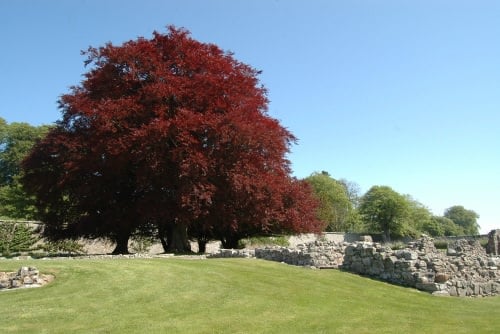
Botanical Name: Fagus sylvatica f. purpurea
USDA Zones: 3-7
Also known as purple beech, this tree is popular for its distinct-looking red to purple, tornado-shaped leaves with criss-cross patterns.
2. Red Norway Maple
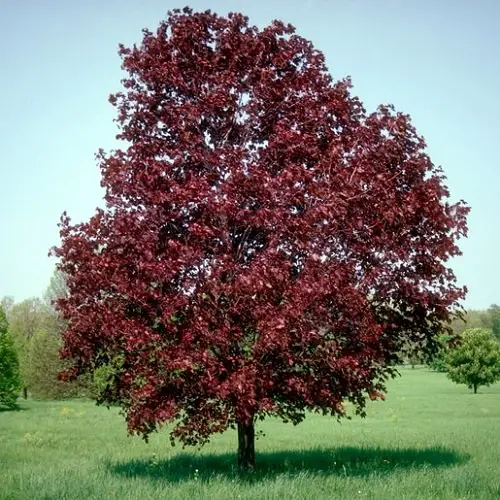
Botanical Name: Acer platanoides ‘Royal Red’
USDA Zones: 4-8
Crimson King Maple grows up to 30-50 feet tall and produces red-purple leaves all summer long. This flowering tree can tolerate drought, shade, and coastal conditions.
3. Red Silver Flowering Crabapple
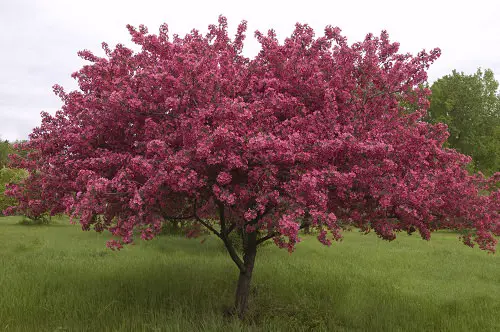
Botanical Name: Malus hybrida
USDA Zones: 5-9
This semi-weeping, spreading, deciduous tree grows up to 10-20 feet wide. It features oval-shaped, dense red or purple leaves.
4. Purple Leaf Plum Tree

Botanical Name: Prunus cerasifera ‘Atropurpurea’
USDA Zones: 5-8
Also known as a cherry plum tree or flowering plum tree, this small tree grows up to 15-25 feet tall. It produces red-purple foliage and ornamental white spring blooms.
5. Japanese Maple
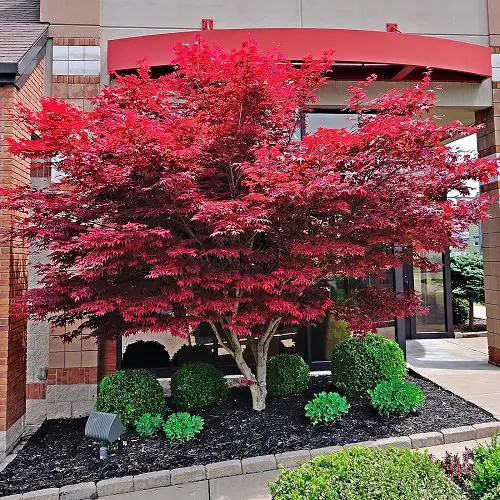
Botanical Name: Acer palmatum ‘Atropurpureum’
USDA Zones: 5-8
‘Blood Leaf’ is admired for its distinct foliage that changes color according to climate shift. The leaves look rich purple during spring, and in summers, the foliage turns deeper and slowly becomes scarlet red for fall.
6. Redbud
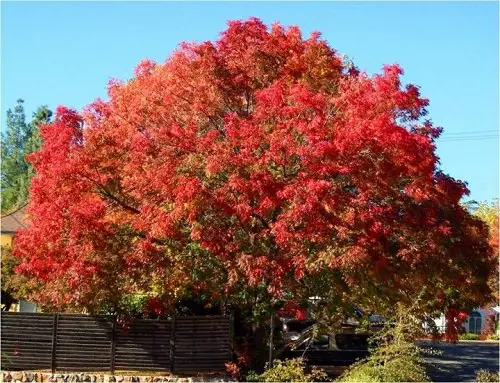
Botanical Name: Cercis canadensis ‘Forest Pansy’
USDA Zones: 5-9
This small deciduous tree is a winner of Garden Merit for its gorgeous foliage by the Royal Horticultural Society. It can grow up to 20-30 feet tall and produces heart-shaped orange-colored foliage that gradually turns dark maroon.
7. Smokebush
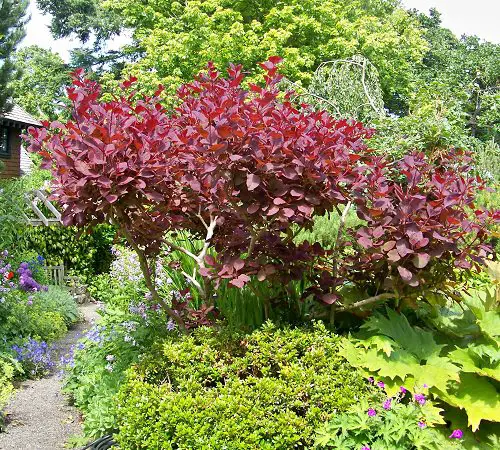
Botanical Name: Cotinus ‘Grace’
USDA Zone: 3-9
This vigorous tree is a hybrid between Cotinus coggygria ‘Velvet Cloak’ and the American Smoke Tree (Cotinus obovatus). The tree produces round, rich red to purple leaves, and the foliage color changes according to season.
8. Laceleaf Japanese Maple
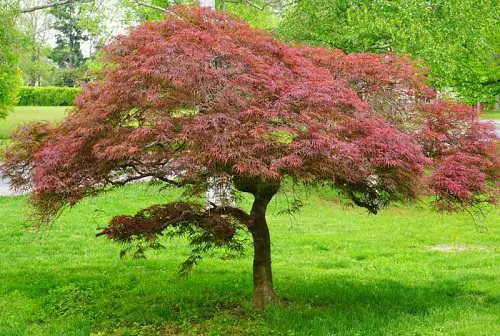
Botanical Name: Acer Palmatum Dissectum ‘Crimson Queen’
USDA Zone: 5-9
This popular variety is known for its distinct and striking leaf color retention. It reaches up to 8-10 feet in height with 10-12 feet of spread. Its size suits landscapes and tight gardens well.
9. Royal Burgundy
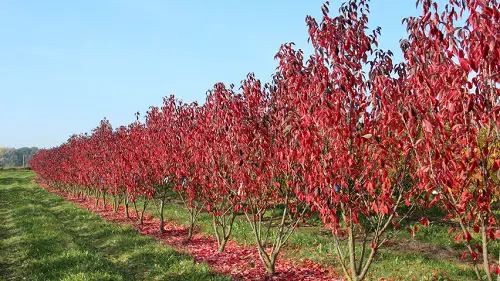
Botanical Name: Prunus Serrulata ‘Royal Burgundy’
USDA Zone: 5-8
Also known as Royal Burgundy Flowering Cherry, this vase-like deciduous tree grows up to 14-20 feet tall with 12-15 feet of spread. It produces red-purple leaves.
10. Photinia
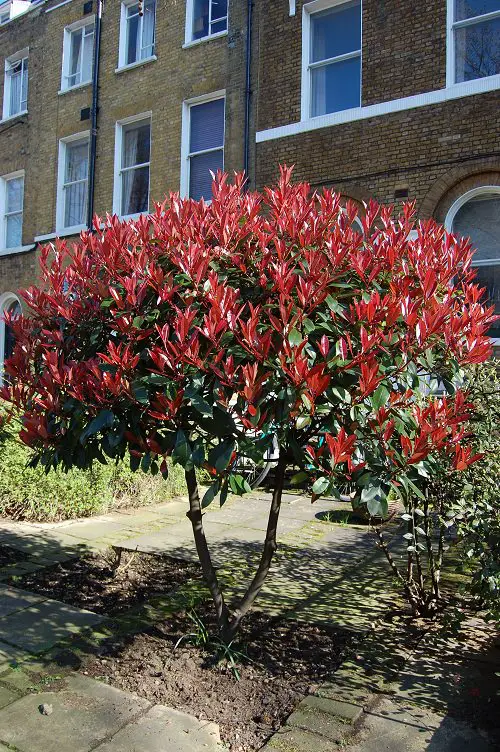
Botanical Name: Photinia x fraseri ‘Red Robin’
USDA Zone: 6-8
Also popular as Christmas Berry Tree and Red Tip Photinia, this beautiful tree produces bright red new growth in spring that contrasts beautifully with mature glossy green leaves.
11. Weeping Japanese Maple
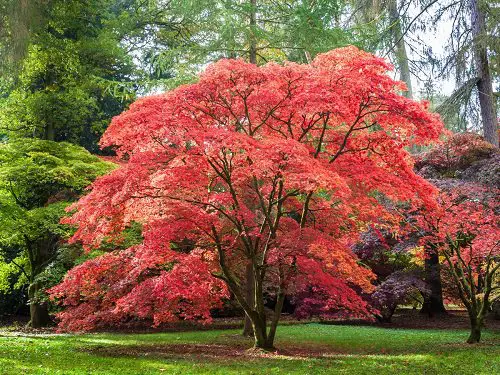
Botanical Name: Acer palmatum ‘Cascade’
USDA Zone: 5-8
This new cultivar of Japanese maple is sought for elegant arching branches. New growth emerges on orange-red stems during spring and shines coppery red with age.
12. Black Tupelo

Botanical Name: Nyssa sylvatica
USDA Zone: 4-9
Black tupelo is one of the most attractive trees. The leaves emerge in the dark green shade in summers and display many shades of bright red, yellow, orange, and purple on the same branch in the fall.
Fun Fact: The bark of the tree looks like an alligator hide!
13. October Glory
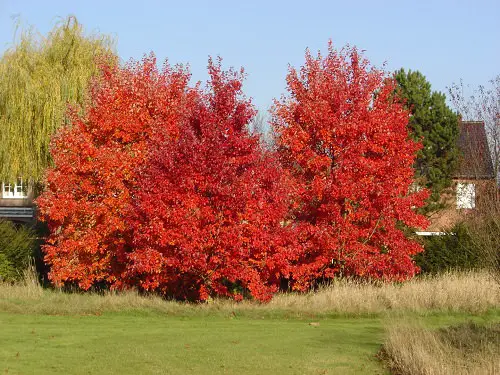
Botanical Name: Acer rubrum ‘October Glory’
USDA Zone: 3-8
This is one of the best trees to enjoy two foliage colors. The tree stays glossy green in spring and turns into a shade of radiant red in summer and late fall.
14. Red Maple
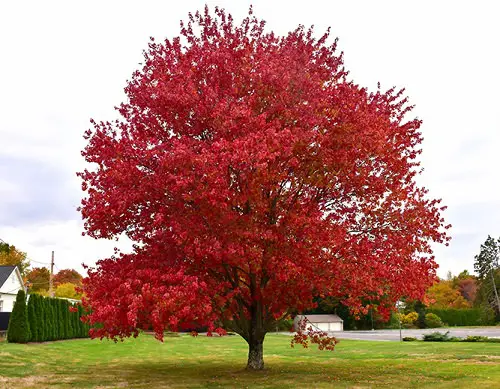
Botanical Name: Acer rubrum
USDA Zone: 3-9
This beautiful tree has a festive display throughout the season as it offers buds in winter, flowers during spring, leafstalks in summer, and vibrant red leaves in fall.
15. Garnet Maple
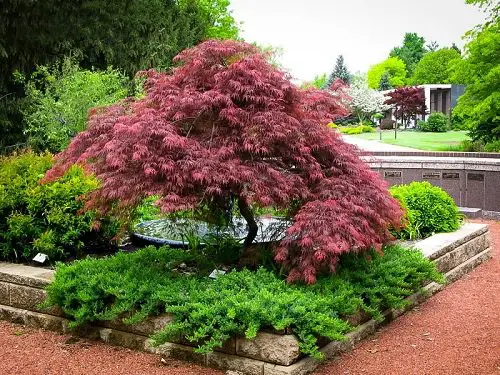
Botanical Name: Acer palmatum dissectum ‘Garnet’
USDA Zone: 5-8
This lace-leaf Japanese maple has red foliage that stays red-orange across the growing season and fades to purple-green in late summer before becoming bright red in fall.
16. Red Japanese Maple
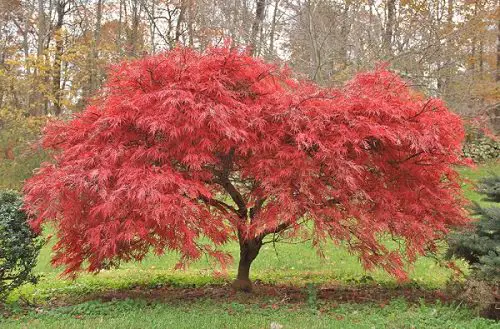
Botanical Name: Acer Palmatum ‘Beni-Maiko’
USDA Zone: 5-8
This dwarf Japanese maple dwarf tree reaches up to 4-6 feet tall and features 3-5 lobed red leaves. Beni-Maiko makes superb bonsai and quite adaptable to container gardening.
17. American Sweetgum
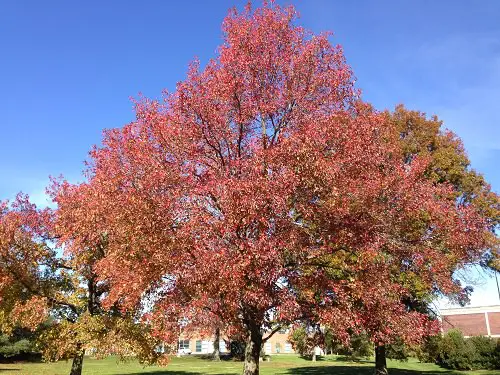
Botanical Name: Liquidambar styraciflua
USDA Zone: 6-10
American Sweetgum displays a show of colors during fall with red, yellow, orange, and purple. Usually, the tree grows up to 60-80 feet tall with huge leaves.
18. Red-Leaf Euphorbia
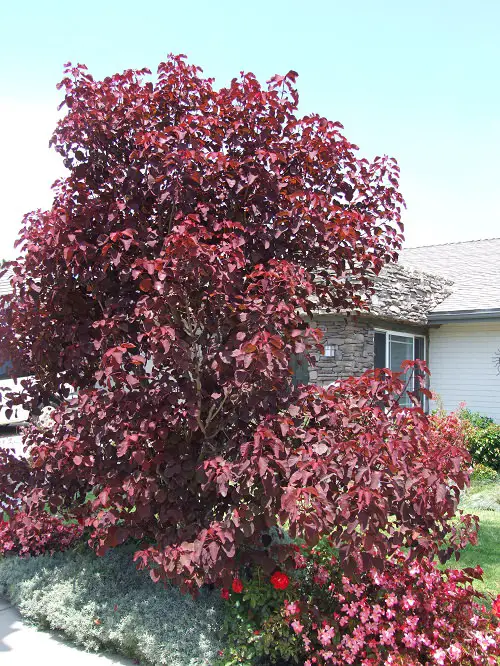
Botanical Name: Euphorbia Cotinifolia
USDA Zone: 9-11
The plant’s heart-shaped leaves take a deep maroon-red hue that matches really well with the red stems. It grows up to 6-8 feet tall.
19. Cranberry Hibiscus
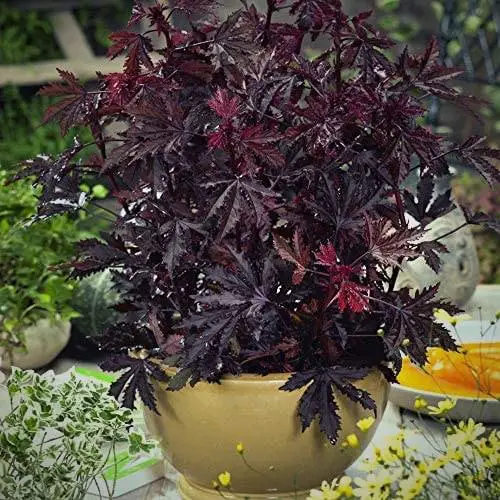
Botanical Name: Hibiscus acetosella
USDA Zone: 7-11
This shrub will amaze you with its copper and burgundy foliage that looks a lot like red maple. It also grows funnel-shaped flowers in red or yellow colors. It’s a perfect red foliage plant for tropical gardeners.
20. Cristina Ficus
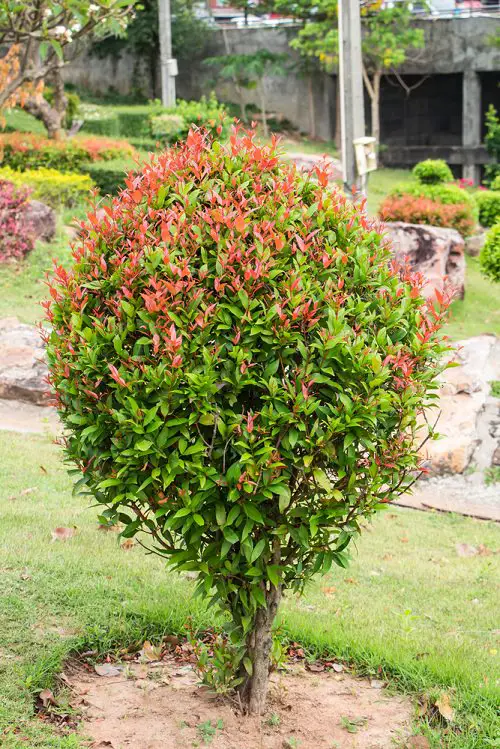
Botanical Name: Ficus ‘Cristina’
USDA Zone: 9-11
The dense leaves of this plant come in shades of deep maroon-red and green, which makes it quite contrasting to look at. It makes for a great hedge and garden plant.
21. Chinese Fringe Flower
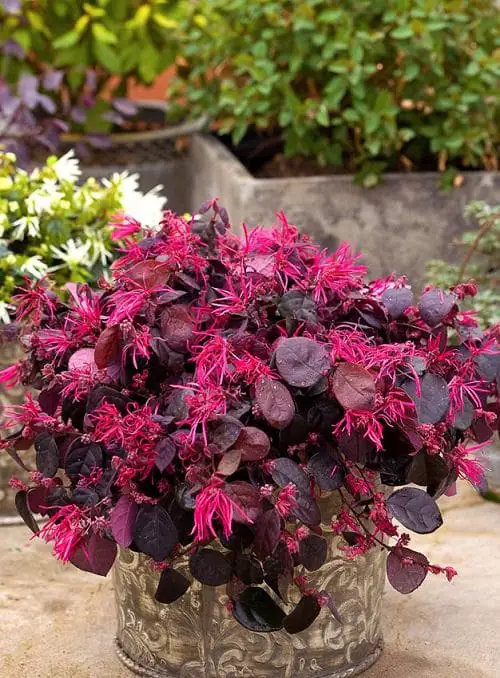
Botanical Name: Loropetalum chinense
USDA Zone: 7-11
This fast-growing shrub’s stunning deep red leaves look more appealing when it grows pink or white flowers in spring. It is a must-have in your garden!



What tree has leaves that are dark red/purple that look like an Elm leaf
Thanx for sharing amazing blog
Hello thanks for sharing this info with us.
Amazing and Informative Post. Keep Writing and inspiring.
Thank you for sharing such a valuable post. Looking Forward to more.
Amazing blog! very useful and informative blog.
Thank you so much!